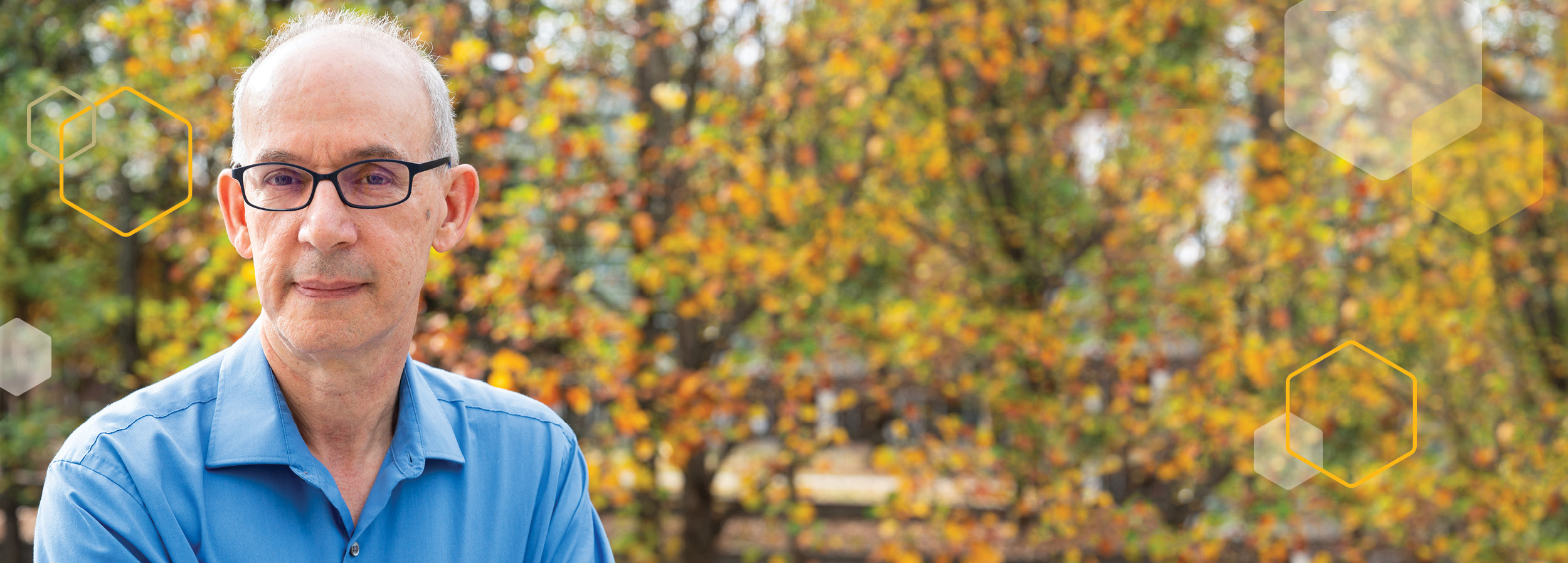The Nobel Whisperer: M.G. Finn on Click Chemistry and Collaboration
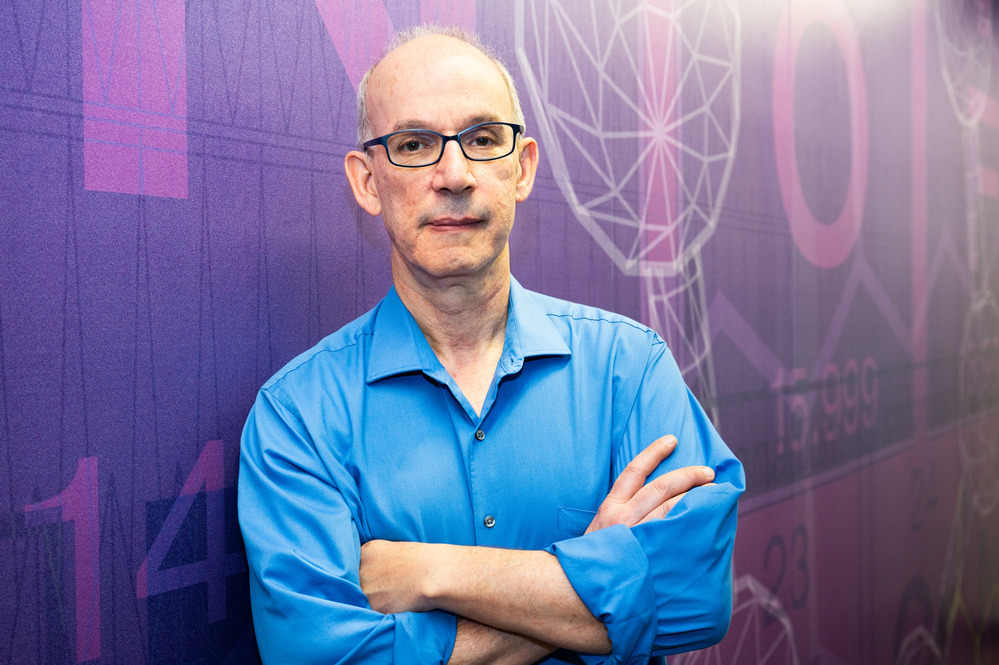
M.G. Finn, chemistry professor and chair of the School of Chemistry and Biochemistry and James A. Carlos Family Chair for Pediatric Technology at Georgia Tech
On Dec. 10, 2022, Georgia Tech chemist M.G. Finn found himself in the Stockholm Concert Hall wearing a tuxedo. It was a big night — the 126th anniversary of Swedish chemist Alfred Nobel's death — but the mood was anything but somber.
Finn attended the Nobel Prize awards ceremony with K. Barry Sharpless, his longtime close collaborator, former advisor, friend, and winner of the 2022 Nobel Prize in Chemistry for the creation of “click” chemistry. Sharpless shared the prize with Carolyn Bertozzi, professor of chemistry at Stanford University, and Morten Meldal, professor of chemistry at the University of Copenhagen in Denmark.
Six weeks earlier, Finn was in Atlanta wearing a navy suit, giving a special seminar on the 2022 Nobel Prize in Chemistry at the Parker H. Petit Institute for Bioengineering and Bioscience (IBB) at Georgia Tech. He had also accepted the delicate task of explaining his contributions to the Nobel-winning science of click chemistry to a room full of collaborators and admirers who knew of his enormous impact.
“It feels like I'm at my own wake, this is great," Finn joked after expressing gratitude for the invitation.
Far from a wake, it was a celebration of one of the world’s top scientists at one of the many peaks of his career. But if comparing the event to a ceremony, it looked more like a wedding. Finn’s students filled the first several rows on the left side of the aisle. Rows of his closest faculty collaborators sat to the right. They watched him with a mixture of excitement and pride, knowing that the true pinnacle of Finn’s career may well be yet to come.
“Chemistry is an architectural endeavor,” Finn began. “To a chemist, to an architect of molecules, the effort that goes into creating these structures is an exercise of both beauty and great skill.”
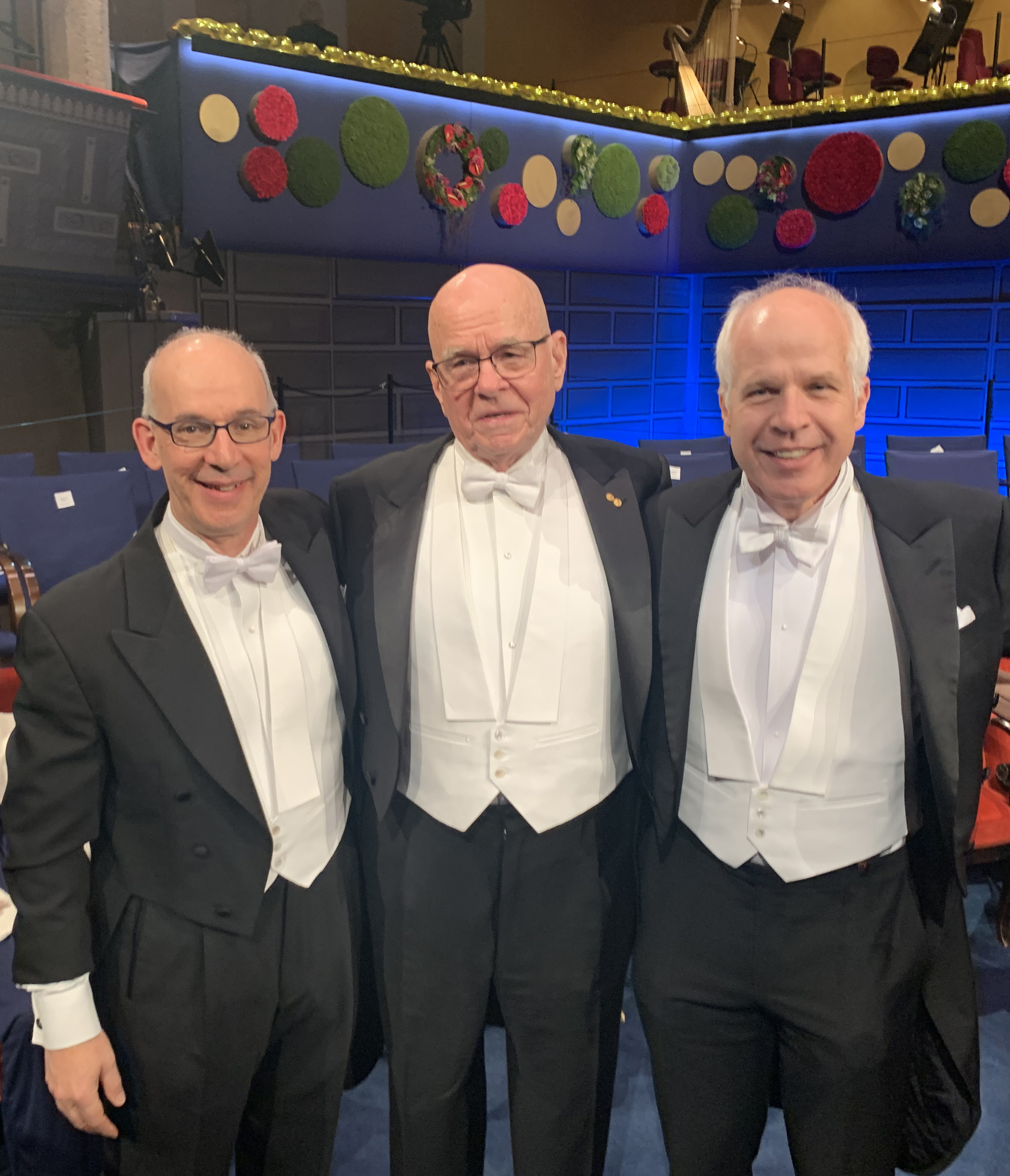
M.G. Finn with collaborators Barry Sharpless and Hartmuth C. Kolb at the 2022 Nobel awards ceremony.
Finn said some chemists make molecular structures so beautiful they take his breath away. “But that’s not what click chemistry is about. The whole point of click chemistry is to democratize chemistry.”
Click chemistry, simply stated, is a set of chemical reactions that provide reliable ways to make bonds. It takes chemical reactions to extremes not often approached — extremes of reliability, and secondly, of accessibility. The idea is that, if any two molecular structures, no matter what type, have the right connectors on them, they can “click” into place, producing new molecules of greater variety and complexity. It is a reliable way to make bonds, which means reliable ways to make new things.
Today, click chemistry is used in thousands of labs worldwide. Its applications have been wide-ranging, transforming entire areas of materials science, surfaces, biology, and medicine, among others. But it all started in the mid-1990s, when, according to Finn, “Drug development was in the toilet.”

“Chemistry is an architectural endeavor,” Finn said as he began his talk. “To a chemist, to an architect of molecules, the effort that goes into creating these structures is an exercise of both beauty and great skill.”

Democratizing Chemistry
Progress in drug discovery had dwindled, and there was a lot of talk about why there weren’t more new drugs. But at that time, if organic chemists weren’t doing complex molecule synthesis — building elaborate structures often requiring multiyear undertakings — they weren’t seen as being on the cutting edge of chemistry. Still, these high chemical arts weren’t solving the world’s dire lack of new medicines.
At that time, Finn worked at the Scripps Research Institute in La Jolla, California. He and Sharpless would sometimes leave their labs and pound down the sea cliffs, taking walks on the beach while talking about science. On one of those walks, Finn and Sharpless realized they were both reading the same book — Out of Control: The New Biology of Machines, Social Systems, and the Economic World by Kevin Kelly, the founding editor of Wired magazine.
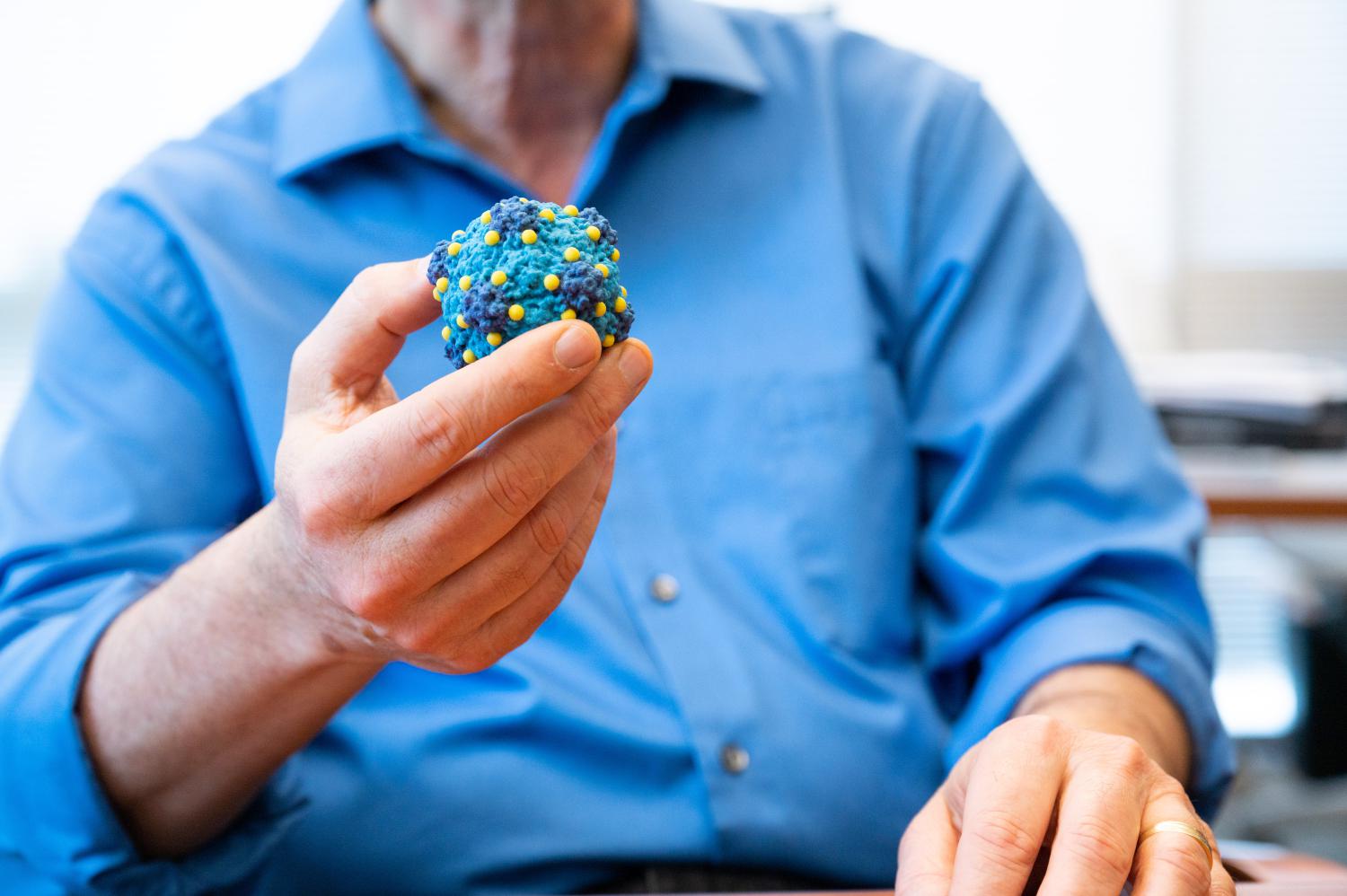
M.G. Finn holding a 3D-printed model of his research group’s first chemically modified virus particle.
One key message of the book is that evolution works by creating functional matter, and functionality is the only thing that matters. It doesn't matter how complicated the road is to get to function, and biology certainly doesn’t care.
“Once you embed that idea, in a sea of people thinking about making molecules, you really want to just give up how you make molecules and focus on the function,” Finn said.
On that walk, Sharpless talked to Finn about an idea that would become click chemistry. It took Finn about a half an hour to get on board. It was a moment of stepping over a threshold, of deciding to risk one’s academic reputation by not doing things that are complicated, but by doing something equally hard that the chemistry community was not ready to embrace.
“It was quite brave of Barry to go out there and say, ‘Number one, we're going to do something nobody's ever done before,’” Finn said. “’And number two, we're going to do something that most of you think is stupid.’”
While Finn gives Sharpless all the credit for having courage, Finn was right there beside him, having just signed up to help make click chemistry a reality.
The Ultimate Collaborator
In 2001, Finn, Sharpless, and Hartmuth C. Kolb published the paper that introduced click chemistry to the world. In chemistry circles, it is fondly known as the “Click Chemistry Manifesto.” This was one of the papers cited for the 2022 Nobel Prize.
As for Finn’s contributions, he articulated the concept and illustrated the utility of click chemistry early on. He and his co-workers figured out how the copper reaction underlying click reactions worked. His lab was among the first to implement click chemistry reactions, showing how to make connections to biological molecules and other materials. But Finn attributes all of that to being in the right place at the right time.
“I had the great good fortune to be there, which was incredibly lucky,” Finn said. “Because of the people we had and the environment we were in, we were in a position to make rapid progress with this chemistry.”
Finn said he is proud of how click chemistry has been adopted by laboratories worldwide, and that people can use his work. He joined Georgia Tech in 2013, seeking to expand click chemistry into the realms of materials science and immunology, bringing with him a spirit of collaboration for which he quickly became known.
“I think M.G. is the most collaborative person I’ve ever met,” said Susan Thomas, Woodruff Associate Professor in the Woodruff School of Mechanical Engineering and IBB. In 2013, soon after Thomas started at Georgia Tech, she gave a seminar. Finn was in the audience and approached her after the talk. “I’m a fresh, brand-new assistant professor, and this esteemed, world-famous chemist comes up to me, introduces himself, says, ‘Susan, I really enjoyed your talk,’ and offers to start a collaboration.”
Thomas describes her ongoing, 10-year collaboration with Finn as one of the most fulfilling and satisfying scientific journeys of her career. She chalks it up to him being very scientifically open-minded. “To understand M.G.’s science is to know that he sees value in literally everything around him,” Thomas said.
But even more importantly, it is the way Finn treats his collaborators that makes all the difference. “He doesn't try to control the situation; he lets the science and the project evolve through conversation,” said Thomas. “He trusts his partners to be partners, rather than him being the one who takes over or dominates. What underlies all of that, I think, is respect.”
When asked what he tries to impart to his students, Finn’s answer is fitting: “To be good collaborators.” And Finn’s definition of being a good collaborator? “Well, first, doing what you say you’re going to do.”
His students thrive in that collaborative environment. Robert Hincapie, a recent graduate of Finn’s lab, has fond memories of interacting with Finn and collaborators throughout his Ph.D. journey. Before Hincapie knew how to do anything related to his doctoral research, Finn had already set up several meetings for the two of them to meet with collaborators. “Looking back on it, I realize that was a big vote of confidence,” Hincapie said. “From the very beginning, M.G. was very encouraging of collaboration.”

“I think M.G. is the most collaborative person I’ve ever met,” said Susan Thomas, associate professor of mechanical engineering.

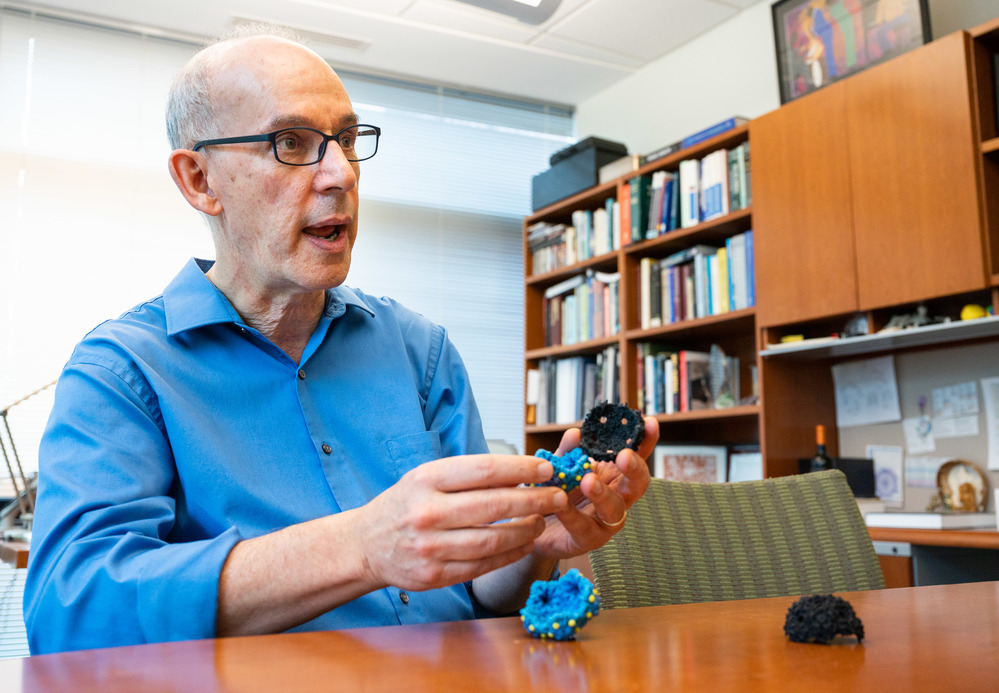
M.G. Finn discusses the principles of what click chemistry is about: “The whole point of click chemistry is to democratize chemistry,” he says.
On Oct. 7, the day the Nobel Prizes were announced, the mood in the Finn lab was split. For many it seemed bittersweet. They wanted Finn to have been awarded too, and it was difficult not to think about the “what-if” scenarios. But for Finn, Hincapie said, the day just seemed sweet. “He was really just excited about this award being made to the field, and specifically to his Ph.D. advisor, Barry,” Hincapie said. “I think that says a lot about M.G.’s character.”
When one builds a career on collaboration, reliability, open-mindedness, and trust, and all the while truly focuses on others, perhaps the need for external validation simply fades into the background over time. But for Finn, a paragon of humility and gratitude, those around him will continue to shine the light his way.
“Georgia Tech is known for its engineers, but it’s amazing to have a chemist at Tech who is so widely appreciated and truly at the pinnacle of science,” Thomas said. “And there's something about M.G., that he doesn't feel threatened by other people's success. I think he just feels the world is better for it.”

Writer: Catherine Barzler
Photographer: Joya Chapman
Media Contact: Catherine Barzler | catherine.barzler@gatech.edu

